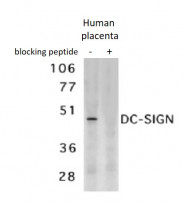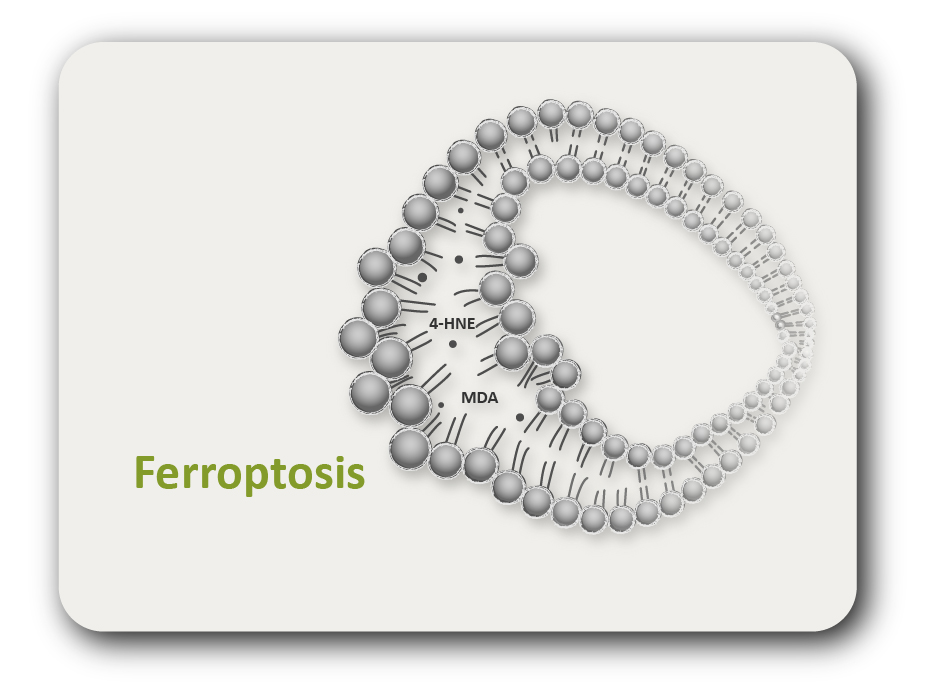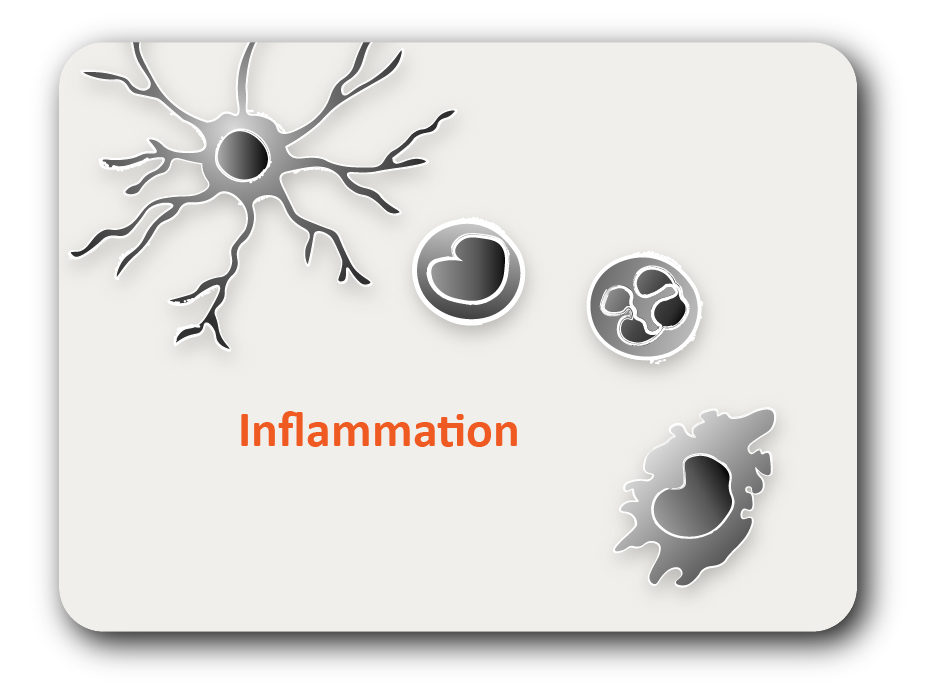ARG22418
anti-CD209 / DC-SIGN antibody
anti-CD209 / DC-SIGN antibody for ICC/IF,IHC-Frozen sections,Western blot and Human,Sheep
概述
| 产品描述 | Rabbit Polyclonal antibody recognizes CD209 / DC-SIGN This antibody recognizes an epitope within the extracellular domain of human DC-SIGN. DC-SIGN was designated CD209 at the 7th leucocyte typing workshop. Rabbit anti Human CD209 antibody detects a band of approximately 44 kDa by western blot. |
|---|---|
| 反应物种 | Hu, Sheep |
| 应用 | ICC/IF, IHC-Fr, WB |
| 宿主 | Rabbit |
| 克隆 | Polyclonal |
| 同位型 | IgG |
| 靶点名称 | CD209 / DC-SIGN |
| 抗原物种 | Human |
| 抗原 | Synthetic peptide corresponding to amino acids 277-293 of human DC-SIGN. |
| 偶联标记 | Un-conjugated |
| 別名 | CDSIGN; Dendritic cell-specific ICAM-3-grabbing non-integrin 1; CLEC4L; DC-SIGN; CD antigen CD209; CD209 antigen; DC-SIGN1; C-type lectin domain family 4 member L |
应用说明
| 应用建议 |
|
||||||||
|---|---|---|---|---|---|---|---|---|---|
| 应用说明 | * The dilutions indicate recommended starting dilutions and the optimal dilutions or concentrations should be determined by the scientist. |
属性
| 形式 | Liquid |
|---|---|
| 纯化 | Affinity purified. |
| 缓冲液 | PBS and 0.02% Sodium azide. |
| 抗菌剂 | 0.02% Sodium azide |
| 浓度 | 0.5 mg/ml |
| 存放说明 | For continuous use, store undiluted antibody at 2-8°C for up to a week. For long-term storage, aliquot and store at -20°C or below. Storage in frost free freezers is not recommended. Avoid repeated freeze/thaw cycles. Suggest spin the vial prior to opening. The antibody solution should be gently mixed before use. |
| 注意事项 | For laboratory research only, not for drug, diagnostic or other use. |
生物信息
| 数据库连接 | |
|---|---|
| 基因名称 | CD209 |
| 全名 | CD209 molecule |
| 背景介绍 | This gene encodes a transmembrane receptor and is often referred to as DC-SIGN because of its expression on the surface of dendritic cells and macrophages. The encoded protein is involved in the innate immune system and recognizes numerous evolutionarily divergent pathogens ranging from parasites to viruses with a large impact on public health. The protein is organized into three distinct domains: an N-terminal transmembrane domain, a tandem-repeat neck domain and C-type lectin carbohydrate recognition domain. The extracellular region consisting of the C-type lectin and neck domains has a dual function as a pathogen recognition receptor and a cell adhesion receptor by binding carbohydrate ligands on the surface of microbes and endogenous cells. The neck region is important for homo-oligomerization which allows the receptor to bind multivalent ligands with high avidity. Variations in the number of 23 amino acid repeats in the neck domain of this protein are rare but have a significant impact on ligand binding ability. This gene is closely related in terms of both sequence and function to a neighboring gene (GeneID 10332; often referred to as L-SIGN). DC-SIGN and L-SIGN differ in their ligand-binding properties and distribution. Alternative splicing results in multiple variants.[provided by RefSeq, Feb 2009] |
| 生物功能 | Pathogen-recognition receptor expressed on the surface of immature dendritic cells (DCs) and involved in initiation of primary immune response. Thought to mediate the endocytosis of pathogens which are subsequently degraded in lysosomal compartments. The receptor returns to the cell membrane surface and the pathogen-derived antigens are presented to resting T-cells via MHC class II proteins to initiate the adaptive immune response. Probably recognizes in a calcium-dependent manner high mannose N-linked oligosaccharides in a variety of pathogen antigens, including HIV-1 gp120, HIV-2 gp120, SIV gp120, ebolavirus glycoproteins, cytomegalovirus gB, HCV E2, dengue virus gE, Leishmania pifanoi LPG, Lewis-x antigen in Helicobacter pylori LPS, mannose in Klebsiella pneumonae LPS, di-mannose and tri-mannose in Mycobacterium tuberculosis ManLAM and Lewis-x antigen in Schistosoma mansoni SEA. On DCs it is a high affinity receptor for ICAM2 and ICAM3 by binding to mannose-like carbohydrates. May act as a DC rolling receptor that mediates transendothelial migration of DC presursors from blood to tissues by binding endothelial ICAM2. Seems to regulate DC-induced T-cell proliferation by binding to ICAM3 on T-cells in the immunological synapse formed between DC and T-cells. [UniProt] |
| 预测分子量 | 46 kDa |
检测图片 (2) Click the Picture to Zoom In
-
ARG22418 anti-CD209 / DC-SIGN antibody IHC image
Immunohistochemistry: Human small inestine stained with ARG22418 anti-CD209 / DC-SIGN antibody.
-
ARG22418 anti-CD209 / DC-SIGN antibody WB image
Western blot: Human placenta tissue lysate in the absence (lane 1) and presence (lane 2) of blocking peptide stained with ARG22418 anti-CD209 / DC-SIGN antibody.







